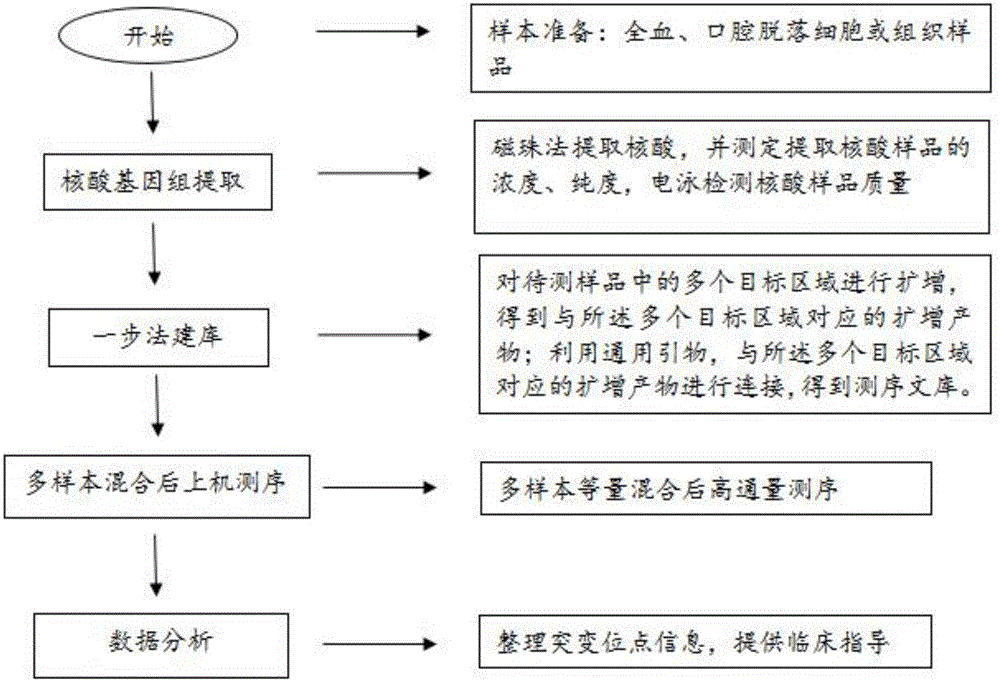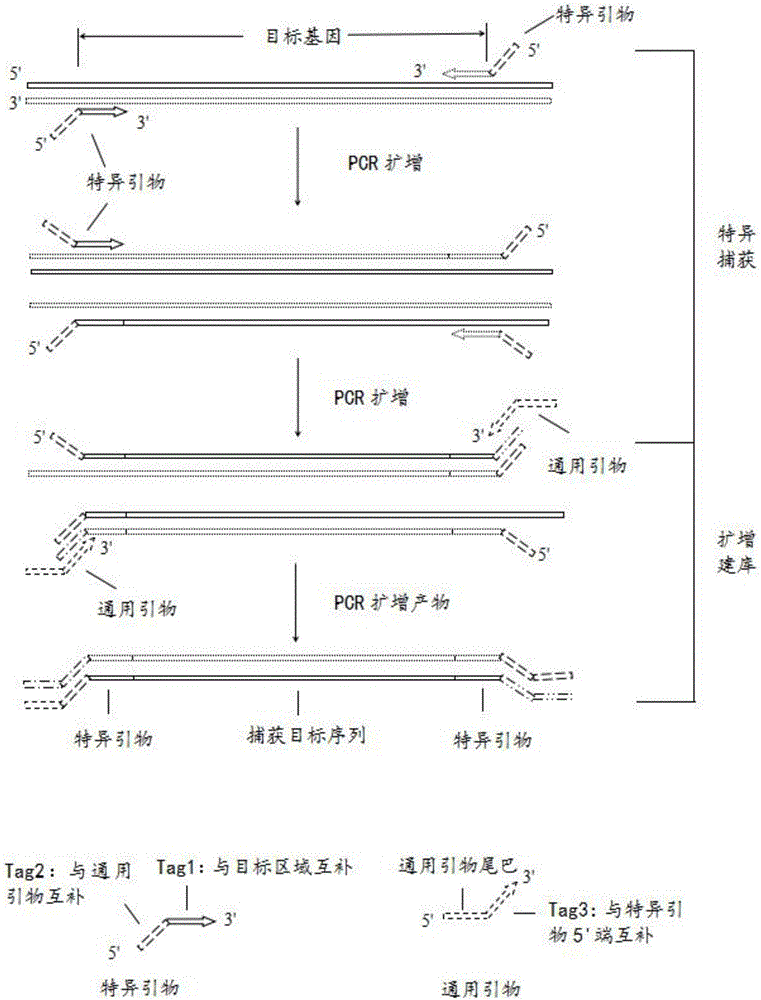Multiple PCR specific primers, kit and method for detecting hereditary hearing loss gene based on high throughput sequencing technique, kit and method
A technology for hereditary deafness and technical detection, applied in the field of multiplex PCR specific primers, can solve the problems of long delivery period of the kit, low sequencing quality, low sensitivity, etc., to enhance the stability of primers, improve the detection efficiency, and simplify the operation. effect of steps
- Summary
- Abstract
- Description
- Claims
- Application Information
AI Technical Summary
Problems solved by technology
Method used
Image
Examples
Embodiment 1
[0048] Example 1 Multiplex PCR-specific primers, kits and detection methods for detecting genetic deafness-causing genes based on high-throughput sequencing technology
[0049] 1. Design of primers
[0050] The genetic deafness-causing gene sequence was selected from the University of California Santa Cruz (UCSC) database, and Primer3 primer design software was used to design the whole exon primers of the susceptibility gene. Common mutational hotspots.
[0051] There are a total of 52 pairs of primers designed for the whole exons of the genetic deafness-causing gene, and each pair of specific primers amplifies the target region with a size of 450-550bp, which covers a wide range and has many detection sites; Specific modification, the modified primers are not easy to be degraded by nucleases, and have a relatively uniform Tm value, which is uniformly designed to be around 60°C (±2°C); the primers show good specificity, Stability and uniformity, and no non-specific amplifica...
Embodiment 2
[0073] Example 2 Primer Specificity Verification
[0074] Using the S1 method in Example 1 to extract nucleic acid from whole blood samples (number: 1-3), oral exfoliated cell samples (number: 4-6), paraffin tissue samples (number: 7-9), and perform concentration and purity determination Finally, take qualified samples and use 10mM Tris to dilute each sample to 100ng / μL, and use 1% agarose gel electrophoresis to detect the quality of each sample (the qualified standard is the same as the step S1 in Example 1), and enter the group after passing the test and perform mark. Using the S2 method in Example 1, the above-mentioned 9 cases of qualified samples were amplified, and the sample volume was 1 μL each. After the amplified product was purified, it was detected by 1% agarose gel electrophoresis (the qualification standard is the same as that of the S3 step in Example 1) . Nine samples were tested using the specific primer amplification and detection method of hereditary deafn...
Embodiment 3
[0076] Example 3 Primer Detection Sensitivity Verification
[0077]Genomic samples extracted from the qualified whole blood sample (No. 1), oral exfoliated cell sample (No. 4), and paraffin tissue sample (No. 7) in Example 1 were used to verify the sensitivity of primer detection. The initial concentration of each sample is 100ng / μL, and it is diluted according to the concentration gradient of 5 times, 10 times and 20 times. After dilution, the concentration of each sample is 20ng / μL, 10ng / μL and 5ng / μL respectively, and the sample name and Concentration marks. Using the S2 method in Example 1, the above-mentioned 9 cases of qualified diluted samples were amplified, and the sample volume was 1 μL each, and the 9 cases of samples were detected using the specific primer amplification and detection method for hereditary deafness-causing genes. The control test is the same as that in Example 1, and the detection method is the same as the sample detection method. See the test res...
PUM
| Property | Measurement | Unit |
|---|---|---|
| melting point | aaaaa | aaaaa |
Abstract
Description
Claims
Application Information
 Login to View More
Login to View More - R&D
- Intellectual Property
- Life Sciences
- Materials
- Tech Scout
- Unparalleled Data Quality
- Higher Quality Content
- 60% Fewer Hallucinations
Browse by: Latest US Patents, China's latest patents, Technical Efficacy Thesaurus, Application Domain, Technology Topic, Popular Technical Reports.
© 2025 PatSnap. All rights reserved.Legal|Privacy policy|Modern Slavery Act Transparency Statement|Sitemap|About US| Contact US: help@patsnap.com



